As we settle into the holiday season, we start to see winter colors everywhere. In tabletop design, home decor, cookies, wrapping paper, you name it, the holiday winter colors are unmistakable. It’s no surprise that ideas for a winter wedding tend to incorporate the holiday winter colors too. Red, green, and gold are synonymous with Christmas. Blue and white are common in Hannukah festivities, and Kwanzaa focuses on red, green, and black.
So why are these the winter colors we see so often in ideas for a winter wedding during this season? In many parts of the world, colder temperatures and waning daylight conjure up certain color palettes more prevalent during the winter season. Curl up in your favorite blanket on the couch, and take a little trip with me through history. This three-part series will describe the three main holidays most known in the winter season: Judaism, Christianity, and Kwanzaa. Additionally, I’ll be offering some December inspiration for your upcoming winter wedding and how to let the season shine through your celebration.
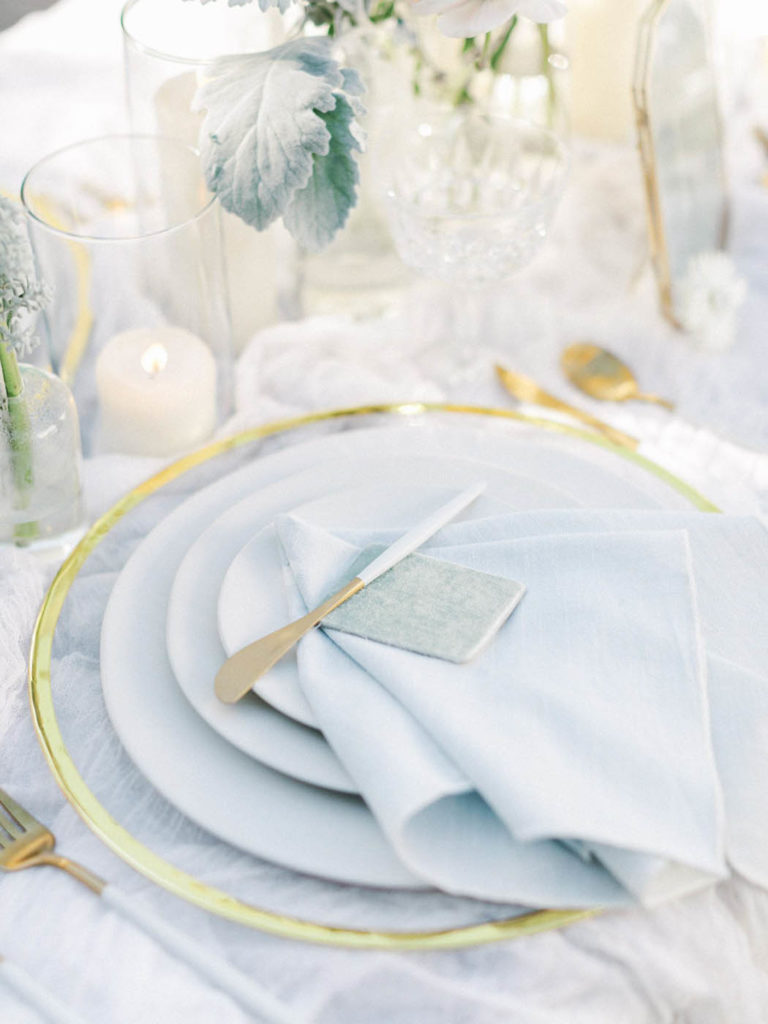
Winter Colors of Blue and White
Ideas for a winter wedding often include the wintry colors of blue and white. At first glance, one could say that blue represents ice and the winter sky. White signifies the snow that falls during this season and blankets cities and towns worldwide. Often, couples looking to incorporate winter colors that are not Christmas red and green find grayish blue, white, and silver as alternatives. But the colors of blue, white, and sometimes silver are actually the traditional colors of Hanukkah, and Judaism itself.
Color Theory
The Israeli flag is also blue and white. Designed by the Zionist movement in 1891 and adopted by Israel in 1948. Interestingly, the Jewish poet Ludwig Frankl also referred to these colors as “the colors of Judah” in a poem not surprisingly called “Judah’s Colours ” in the mid 19th century. The flag’s blue stripes symbolize those found on the tallitot, a traditional Jewish prayer shawl worn at the synagogue and Jewish weddings. The colors of blue and white also come with universal human associations, regardless of religion.
White suggests purity, peace, and light. Blue is associated with the sky, faith, wisdom, and truth.
Amanda Green
To further illustrate this point, consider the flag of Finland. These two colors were specifically selected because they represent the landscape of the country. White symbolizes the snow that covers the country in the winter season. The blue color stands for the sky and numerous lakes that dot the Finnish topography.
Of course, just because a couple incorporates white and blue ideas for a winter wedding does not mean that they are Jewish. As mentioned earlier, there are universal connotations beyond the religious at work here. It is interesting to note where these colors came from in world history, and how they still play a role in our modern celebrations of today.
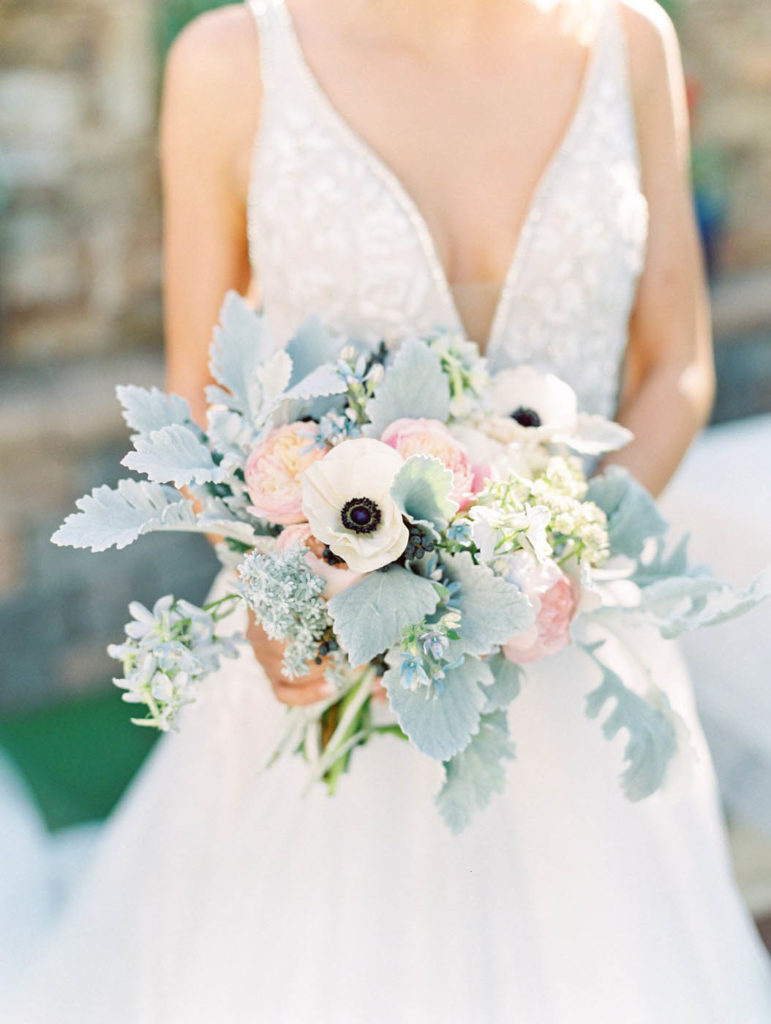
The Ancient History of Red and Green Winter Colors
There are many theories on how and why red and green are so popular during the Christmas season. Let’s start with a bit of history about green, shall we?
Ancient Egypt
Though we think nowadays that green represents Christmas trees, the use of this color dates much farther back into history. Ideas for a winter wedding almost always incorporate green, and we can trace this back to Egypt. Egyptians would bring palm fronds and evergreens into their home to celebrate the winter solstice during the wintertime.
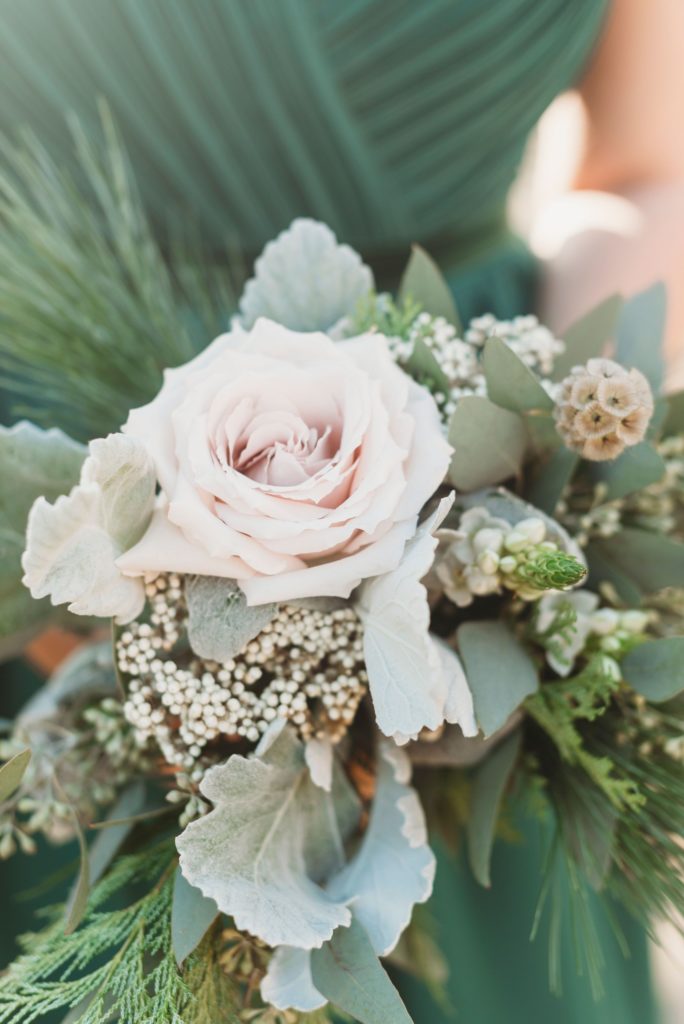
In the northern hemisphere, December 21/22 is the shortest day of the year. For Egyptians, this date is also paramount. Ancient Egyptians believed a direct correlation between their chief deity, Ra, and the length of the sun’s rays/daylight. Ra is the sun god in Egyptian religion, and is responsible for shining the sun’s light onto Egypt. As daylight waned in the fall and winter, it too was believed Ra’s power was weakening. The winter solstice marks the shortest amount of daylight, but it also reminds Egyptians that verdant spring and summer would soon follow. After the solstice, Ra’s health (aka daylight) would increase its power, causing crops to bloom and harvest. The more sunlight bestowed upon Egypt, the greater their crop yield and eventual harvest.
Ancient Rome
To celebrate this yearly phenomenon, Egyptians would decorate their homes with green trees and plants to mark this special day. Green symbolized the coming spring and summer when crops would be bountiful, and daylight would increase. The increasing daylight from Ra was considered one of his gifts to the Egyptians so they could grow their crops.
A more common story about the origins of green and red includes the Ancient Romans and the Saturnalia. Romans enjoyed three holidays in December. Eventually, three holidays merged together with each other to create a week-long celebration.
The Saturnalia
The first celebration was in honor of Saturn, the god of agriculture. Originally held on/around the 17th of December, this feast day served as a reminder that soon crops would be plentiful, and fields would be green with life. As you can see, this is strikingly similar to Ancient Egypt’s focus on the color green too.
Two days later, Romans celebrated the Opalia, a feast day dedicated to Saturn’s wife/sister. She was the goddess of abundance and the fruits of the earth. Thirdly, there is the Brumalia. The word Brumalia comes from the Latin bruma meaning “shortest day.” This marked the final feast day to enjoy among family and friends. Eventually, this holiday (celebrated on the winter solstice) combined with Saturn and Ops to create a holiday week of parties. All government offices closed for this “week of debauchery,” as many called it, and it was the most popular holiday of Roman religion for centuries.
The Saturnalia included parties, colorful dress, role reversals (slaves became the masters), and the exchanging of gifts. Normally very rigid in what they wore, Romans would opt for colorful and vibrant frocks of red, gold, and purple, instead of white. Normally against the law, gambling was also reinstated during this holiday. It is here that we see Romans decorate their homes with evergreen boughs, holly, and red berries.
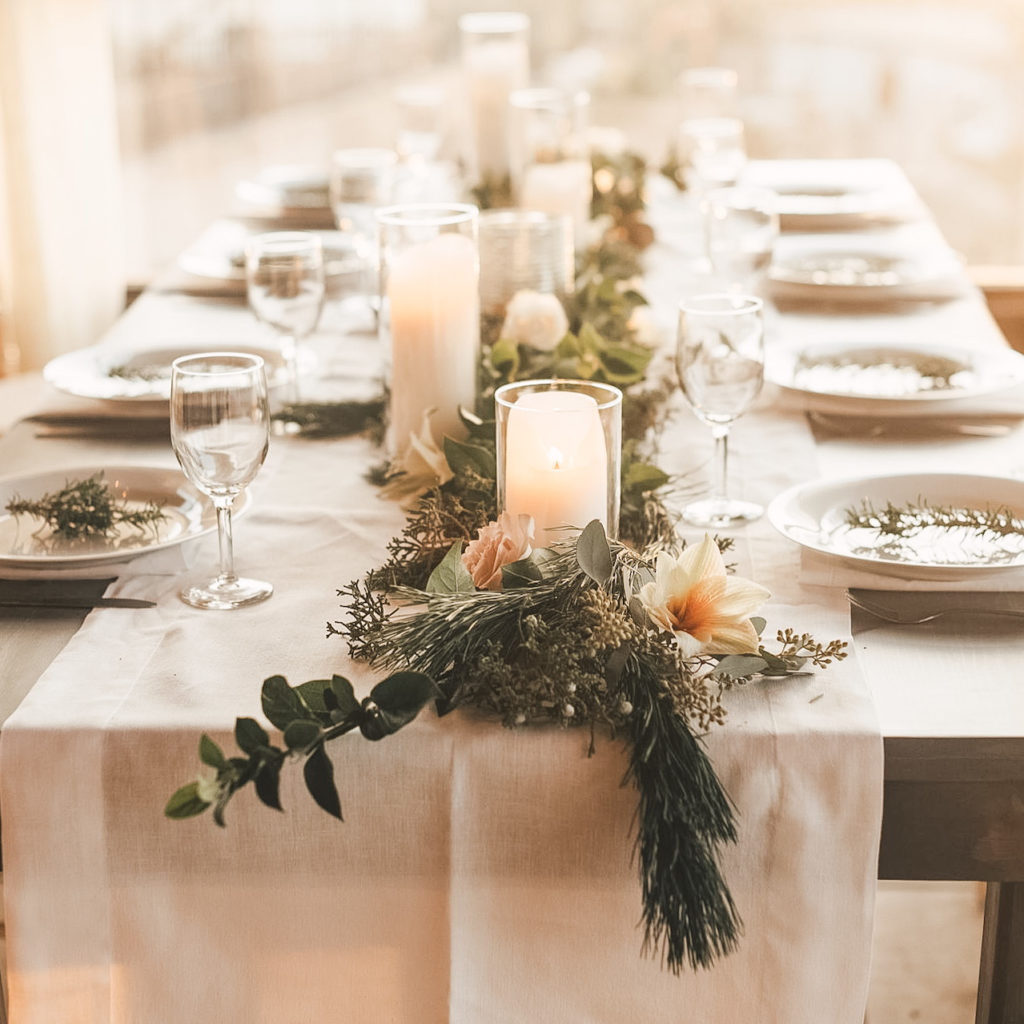
The Beginnings of Christianity
As Christianity gained momentum in the early first to fourth centuries (and especially when Emperor Constantine made Christianity the official religion of the Roman Empire), the pagan holiday of Saturnalia was replaced with the monotheistic birth of Jesus. Originally meant as a peaceful holiday to attend Church, this day was celebrated as a holy day with somber undertones. In fact, the celebration of Christmas was originally designed to be the exact opposite of the drunken parties of the Saturnalia. (Fun fact: the original feast day for Christians was actually Easter, not Christmas).
The early motive for celebrating Jesus’ birth on December 25 may have been akin to that which inspires modern churches to hold “fall festivals” or “Bible costume parties” on October 31. That is, Christians desire to provide a spiritually positive alternative to what they perceive as a pagan celebration. Over time, as the Roman Empire was Christianized, customs associated with Saturnalia were “cleaned up” and absorbed into the celebration of Christmas.
Dr. Carey Fleiner, Saturnalia: the origins of the debauched Roman ‘Christmas’
But old habits die hard. Christmas and the vestiges of Saturnalia continued to intertwine themselves into the fabric of the Roman Empire. It wasn’t until the Middle Ages that we see the first Christmas tree as we know it today.
Modern Christianity
The more “modern” take on Christmas colors red and green began around the 13th century. It is here that we see Christians bringing evergreen trees into the Church for the annual paradise play. Remember that the majority of people were illiterate. Paradise plays taught the general public the most important Bible stories by reenacting. To tell the story of Adam and Eve in the Garden of Eden, Christians took apples and hung them from the evergreen trees to symbolize the tree of Good and Evil. By the 16th century, we start to see commoners celebrating the holiday with trees and apples and a penchant for red and green.
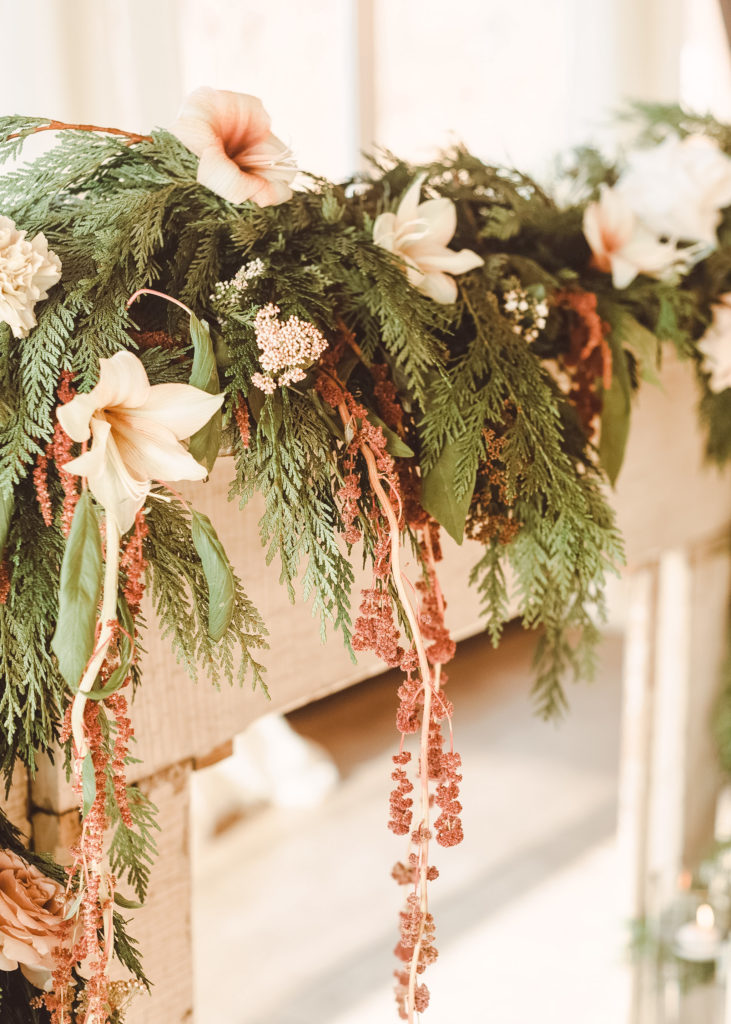
Christmas in the New World
Interestingly, Christmas trees in the United States were not considered appropriate decorations. Long considered to be symbols of Paganism, trees were not allowed until the early 19 century. If you remember, the Puritans were a pretty serious, god-fearing bunch of colonists that took their religion very seriously. Would you believe that people were actually fined for hanging certain Christmas decorations at that time? It wasn’t until Queen Victoria in 1846 made Christmas trees an “appropriate” holiday decoration. Shortly after, America also adopted this trend. By the 1890s we see hundreds of European-made ornaments flooding the American landscape, and the rest you could say is history!
Western Contributions to Winter Color Theory
As you can see, Christianity contributed quite a bit of background to some of our most popular holiday colors. Ideas for a winter wedding often include one or more of these colors. Here’s a basic rundown of Christmas colors and what they commonly symbolize in Christianity and/or western culture:
We’ve already identified that green represents numerous culture’s take on the coming of Spring and Summer. Green in Christianity comes from the Paradise Play’s tree of good and evil. Red is the color of holly berries, once again used by ancient Romans. For Christians, red also represented the blood of Jesus when he died on the cross. It is also the color of Bishops’ robes and eventually contributes to the costume of St. Nick. Gold is the color of sunlight. The sun’s rays were crucial for the Ancient Egyptians as well as all ancient civilizations. Gold is also one of the gifts the Wisemen gave to Jesus. Lastly, white symbolized purity and peace in western cultures and was actually the color of paper decorations that were first used and apples to decorate the paradise trees.
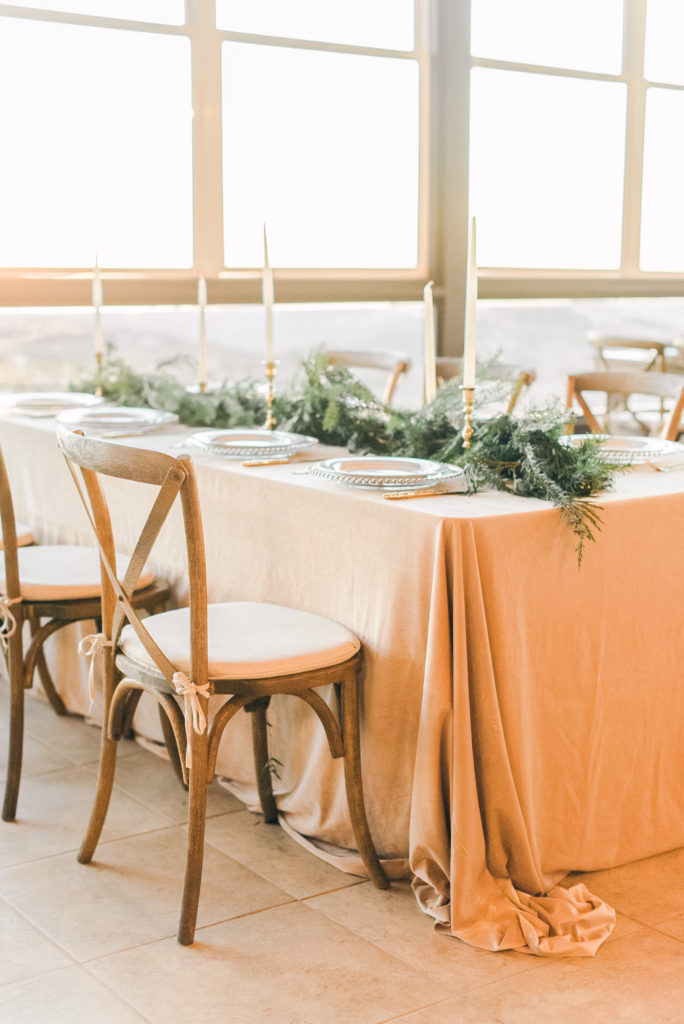
Works Cited
Fleiner, C. (2020, December 01). Saturnalia: The origins of the debauched Roman ‘Christmas’. Retrieved December 21, 2020, from https://www.historyextra.com/period/roman/how-did-the-romans-celebrate-christmas/
Forgasz, Rebecca. “The Story of Hanukkah: How a Minor Jewish Holiday Was Remade in the Image of Christmas.” The Conversation, 22 Dec. 2019, theconversation.com/the-story-of-hanukkah-how-a-minor-jewish-holiday-was-remade-in-the-image-of-christmas-127620.
Green, Amanda. “‘Why Are Blue and White Hanukkah Colors.’” Mentalfloss.com, 2018, www.mentalfloss.com/article/31820/why-are-blue-and-white-hanukkah-colors.
Hope, Rafael. “Hanukkah Colors: The Real Meaning Behind Blue & White (and Silver).” Amen V’Amen, Amen V’Amen, 21 Nov. 2019, amenvamen.com/hanukkah-colors.
JPC-DESIGN, W. (n.d.). The Colors of Christmas on whychristmas?com. Retrieved December 21, 2020, from https://www.whychristmas.com/customs/colors-of-christmas.shtml
Porter, E. (2019, September 05). From Palm Fronds to Fir Trees: Myths and Legends of the Christmas Tree. Retrieved December 21, 2020, from https://buchanansplants.com/from-palm-fronds-to-fir-trees-myths-and-legends-of-the-christmas-tree/
Saturn. (n.d.). Retrieved December 21, 2020, from https://www.britannica.com/topic/Saturn-god
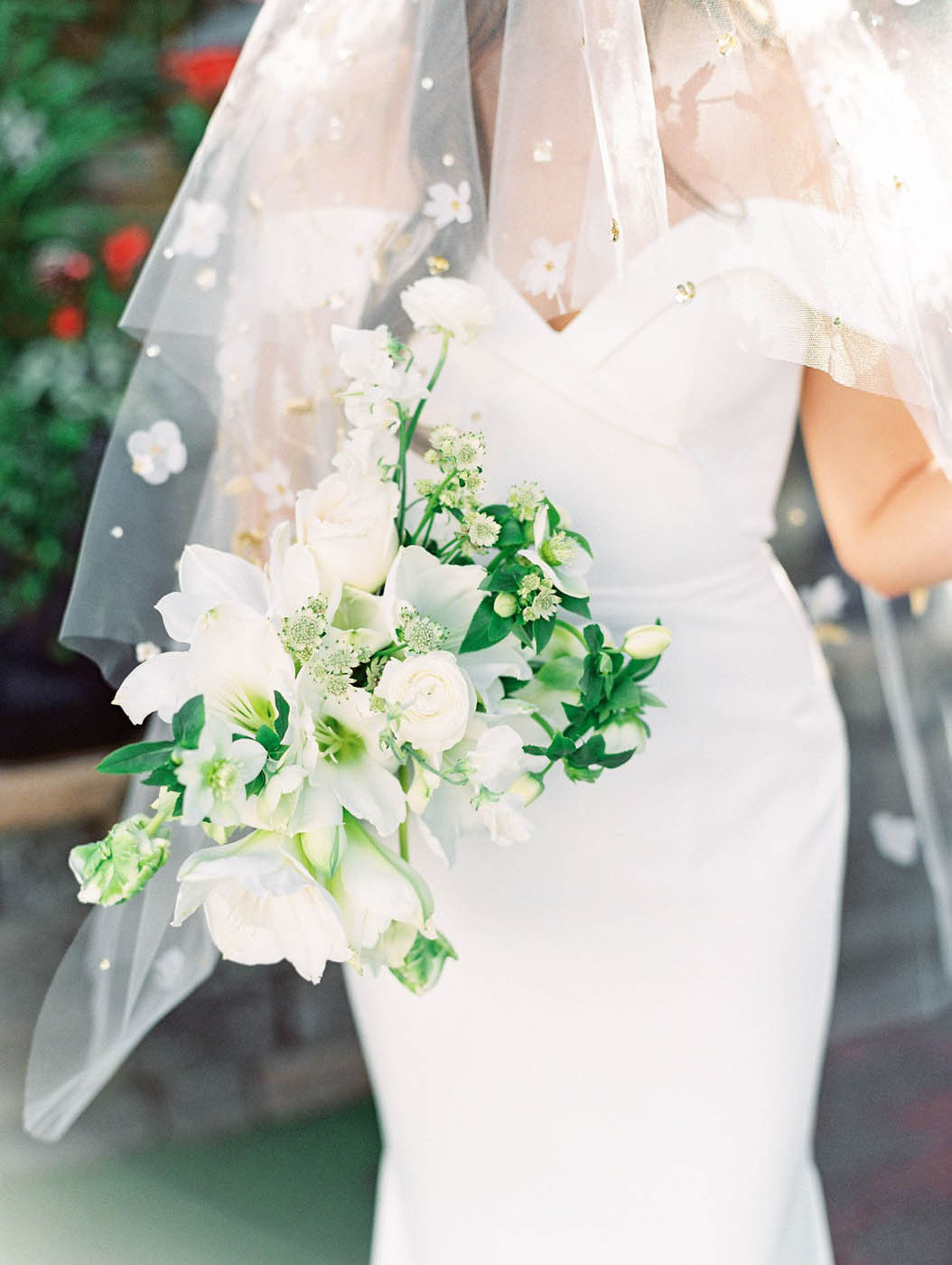
I’m extremely pleased to discover this website. I wanted to thank you for ones time just for this fantastic read!! I absolutely enjoyed every part of it and i also have you bookmarked to see new stuff in your site.
Definitely, what a great blog and revealing posts, I definitely will bookmark your site. Best Regards!
Great post with great ideas.